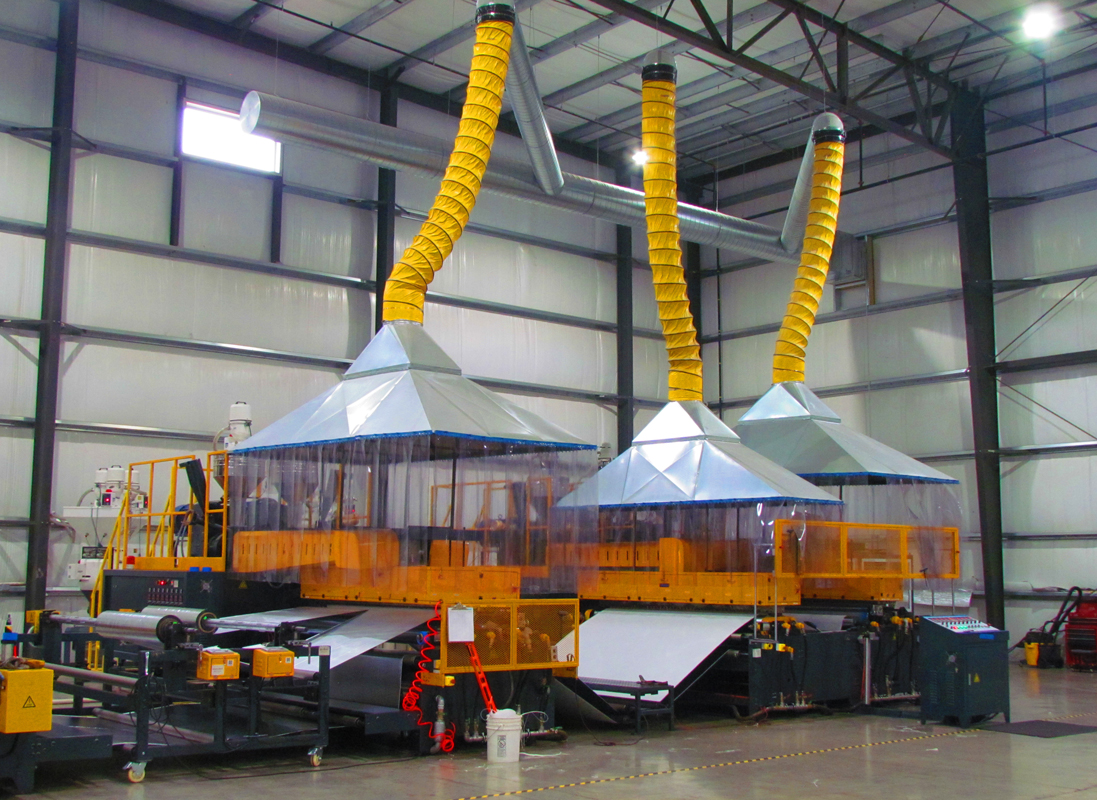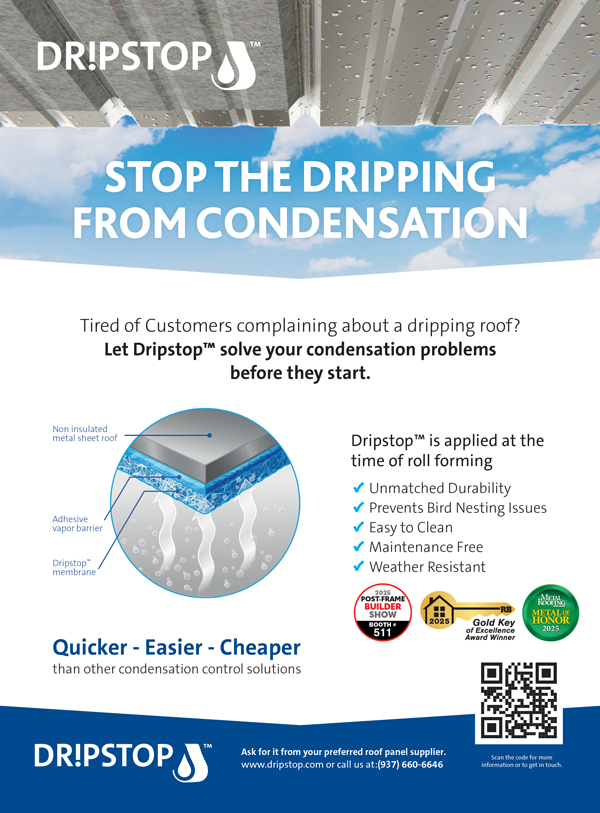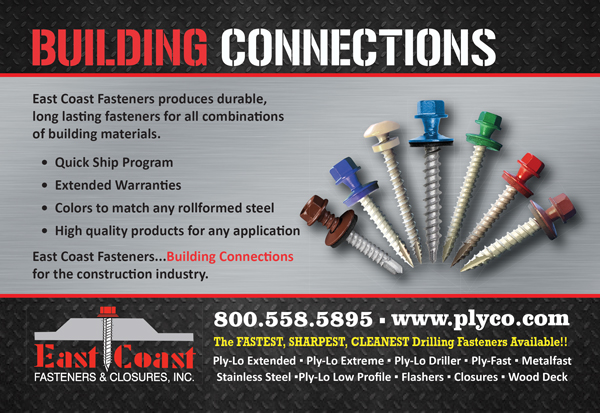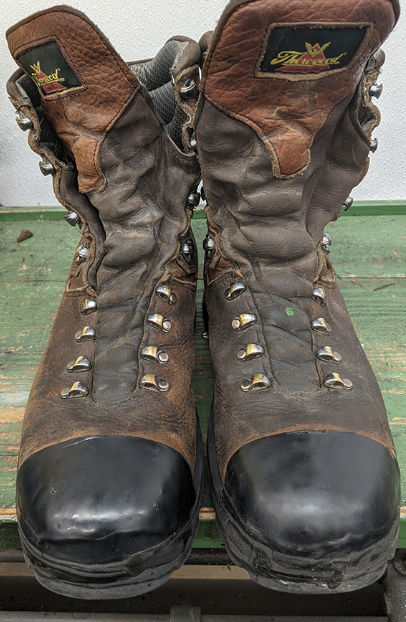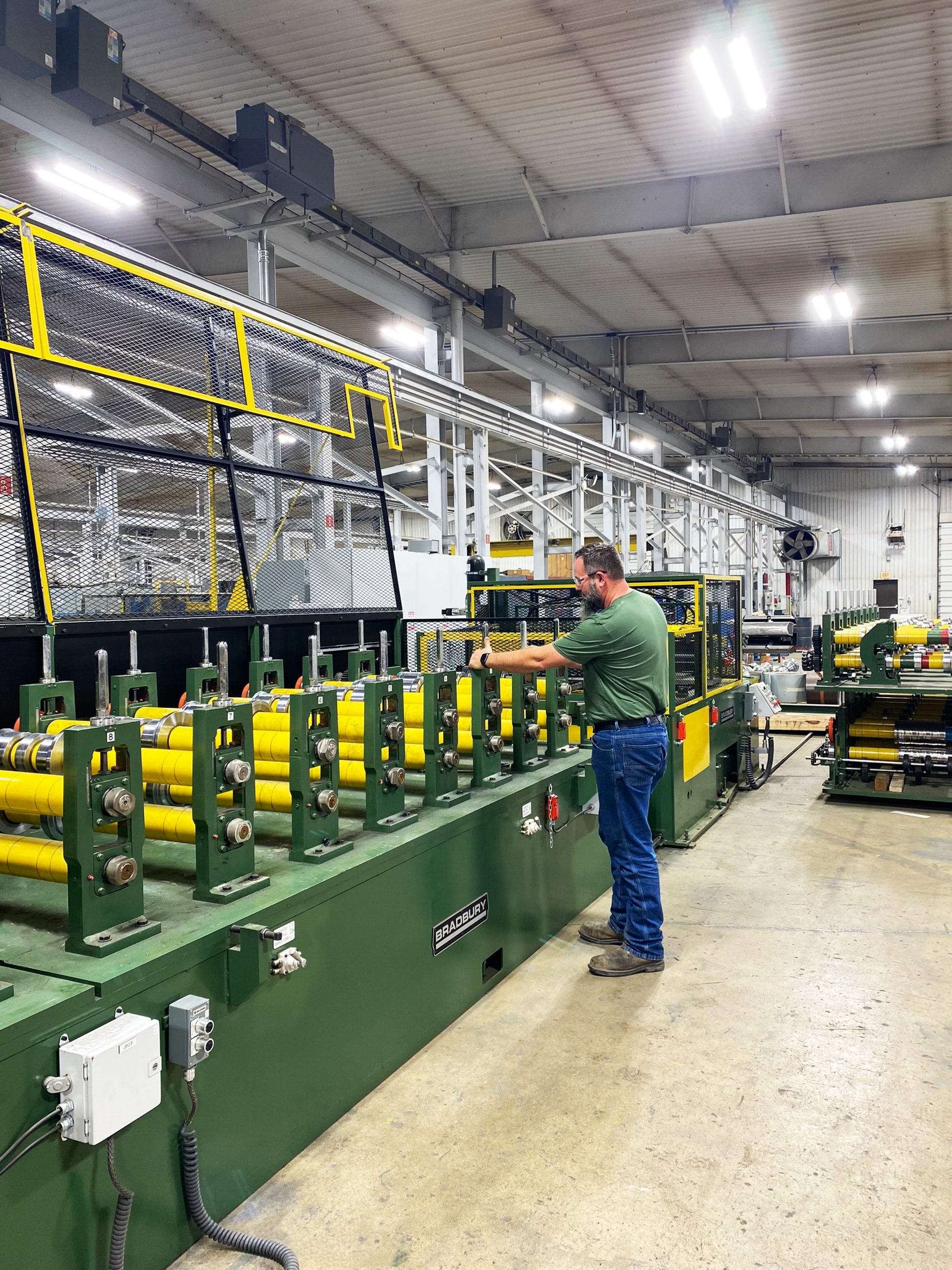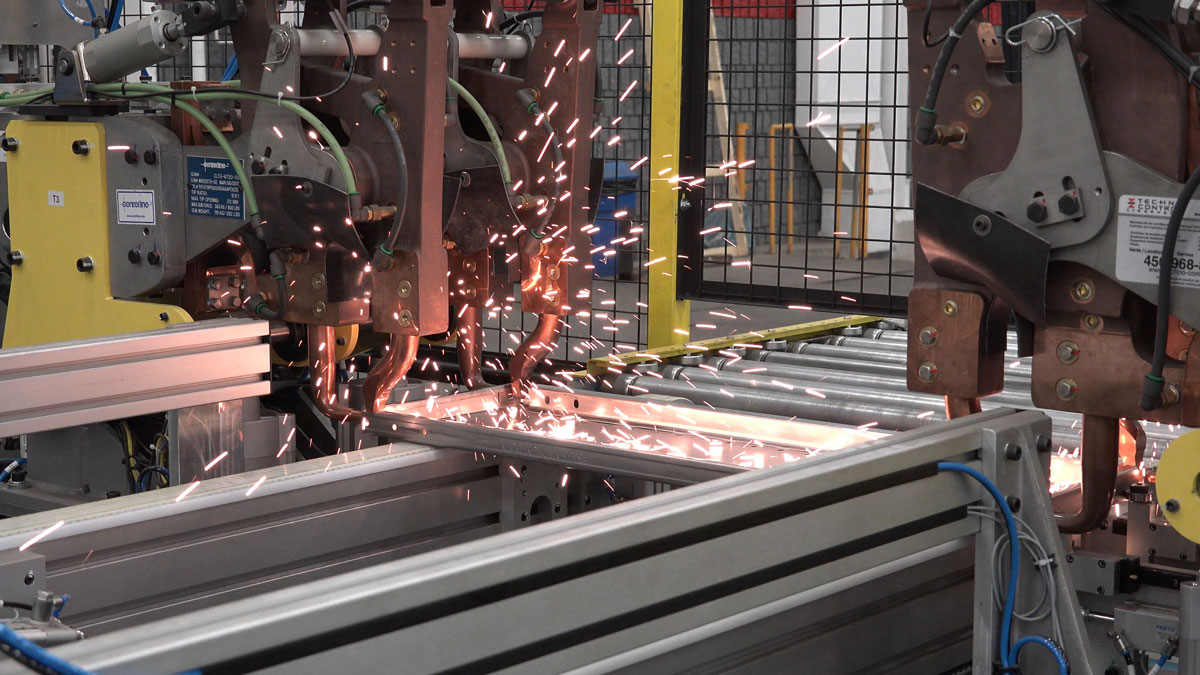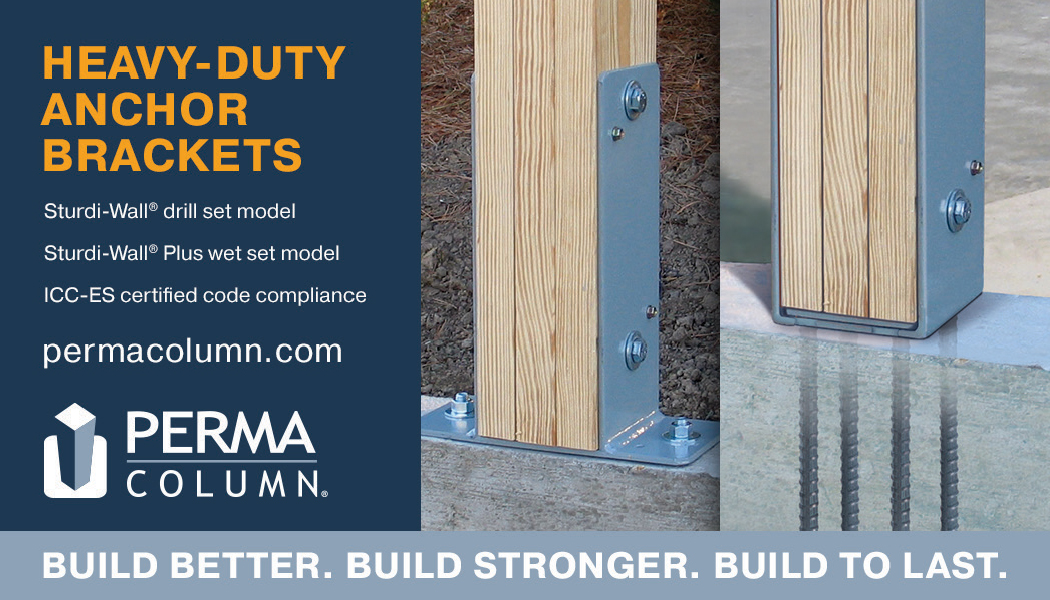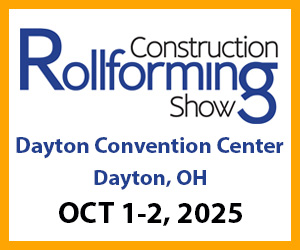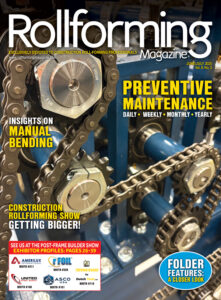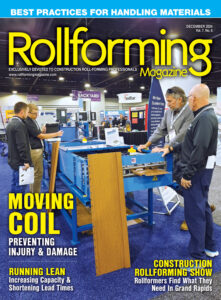Safety is a vital part of running any business, especially those with high risk. When working with heavy machinery such as roll formers, there must be proper safety protocols in place. Whether a brand-new employee or a seasoned veteran, safety procedures such as lockout/tagout and regular trainings are essential for a healthy and safe metal-forming shop.
Safety Protocols
Rick Johnson, MWI Components’ quality control manager, gave his input on what safety protocols should be in place to protect workers in a roll forming shop. He advised that hazards need to be guarded by hard guards, light curtains, or other sensing devices to keep people away from hazardous areas. Proper guards can avoid serious injuries, which can be as extreme as amputation and/or death. Lockout/tagout (LOTO) protocols are also essential to protect workers when servicing or maintaining machinery. Johnson stated that MWI Components uses LOTO every day to prevent accidents. Each piece of equipment has a lockout/tagout procedure, and these procedures are used whenever an employee is servicing equipment where the employee could be exposed to hazards involving the equipment.
Another safety precaution is to utilize cut resistant gloves. Using these gloves has prevented cut-related injuries and has reduced the severity of cuts that could have been very serious down to first-aid treatable cuts. Regular machine maintenance and inspections ensure that machines are running correctly. A maintenance schedule should be implemented to check for wear and tear, lubrication, and adjustments. Being proactive can prevent mechanical failures that may lead to accidents. Modern roll forming machines come with various safety features. These may include emergency stop buttons, guards, and sensors. If working with these machines, it’s important to ensure that these features are easily accessible and functioning as they should.
Training
Comprehensive training programs should cover machine operation, safety protocols, and emergency procedures. Training should ensure that all employees understand their specific safety responsibilities. Hands-on training to allow employees to familiarize themselves with machinery and safety equipment can significantly enhance the employee’s confidence and competence, which will lead to safer operations.
New employees should receive safety training before they enter any production areas. At MWI Components, all employees, old and new, get annual training which includes emergency response, machine guarding, bloodborne pathogens, slips, trips, falls, and accident prevention. Reoccurring trainings help keep employees vigilant to potential workplace hazards and reduces the risk of accidents by keeping safety knowledge fresh in the employees’ minds.
Most Common Safety Hazards in a Metal Shop
Johnson explained that at MWI Components, crushing hazards on presses and brakes are safety hazards. These hazards can be avoided by two-handed controls, light curtains, and physical guarding. Roll formers additionally have pinch and crush hazards that can also be avoided by physical guarding, light curtains, and zone scanners.
Johnson believes that “good housekeeping” is the number one prevention tactic to prevent slips, trips, and falls. Any liquid spills should be identified, and “wet floor” signs should be placed until the spill can be cleaned up. Any scrap that misses the scrap containers should be cleaned up several times per hour to avoid any safety hazards as well. Clear signage of hazards, safety zones, and emergency exists along with clear walkways and proper material storage are important and effective ways to prevent and mitigate hazards.
First Aid and Emergency Resources to have on hand
First aid stations should be strategically placed around the shop so travel distances are short whenever and wherever first aid supplies are needed. A first aid “go bag” for first responders to take to the accident site is supplied so that runners don’t need to run back and forth to the first aid station during an emergency. Eyewash stations should also be located throughout the facility.
Emergency exits should be marked with lighted signs and emergency lights that come on if the power fails. Signs should be placed to indicate evacuation and weather shelter plans. It’s important that all employees are aware of the emergency plans ahead of time to effectively react when faced with an emergency.
At MWI Components, the safety committee meets every month. Part of the meeting is spent discussing emergencies and how they will be responded to. They also hold emergency response drills several times per year.
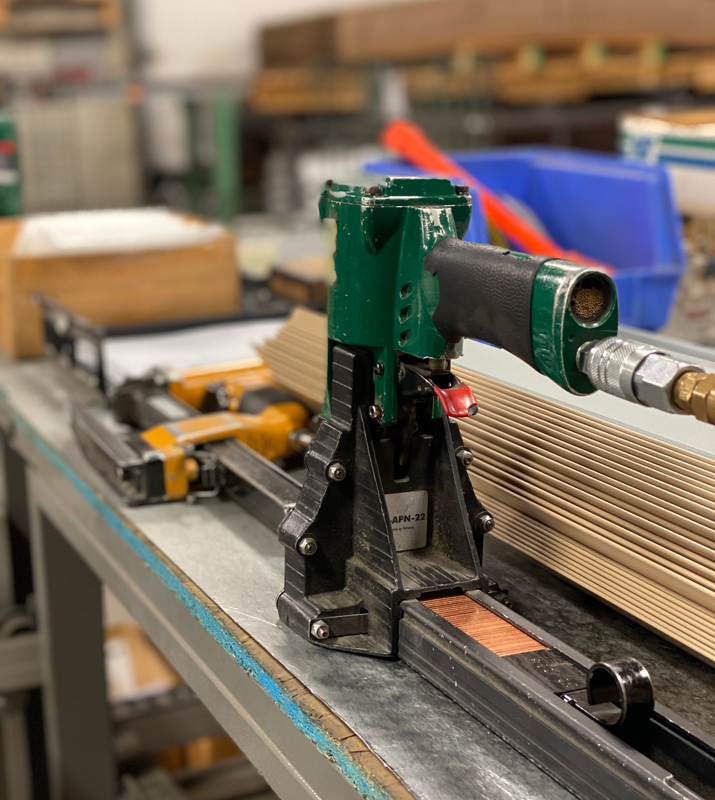
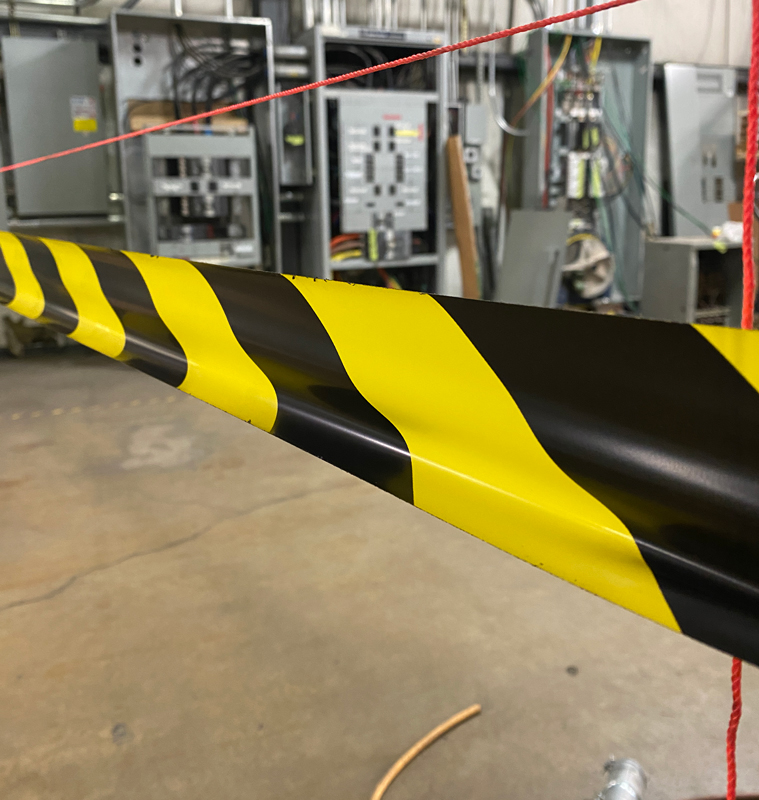
and servicing.

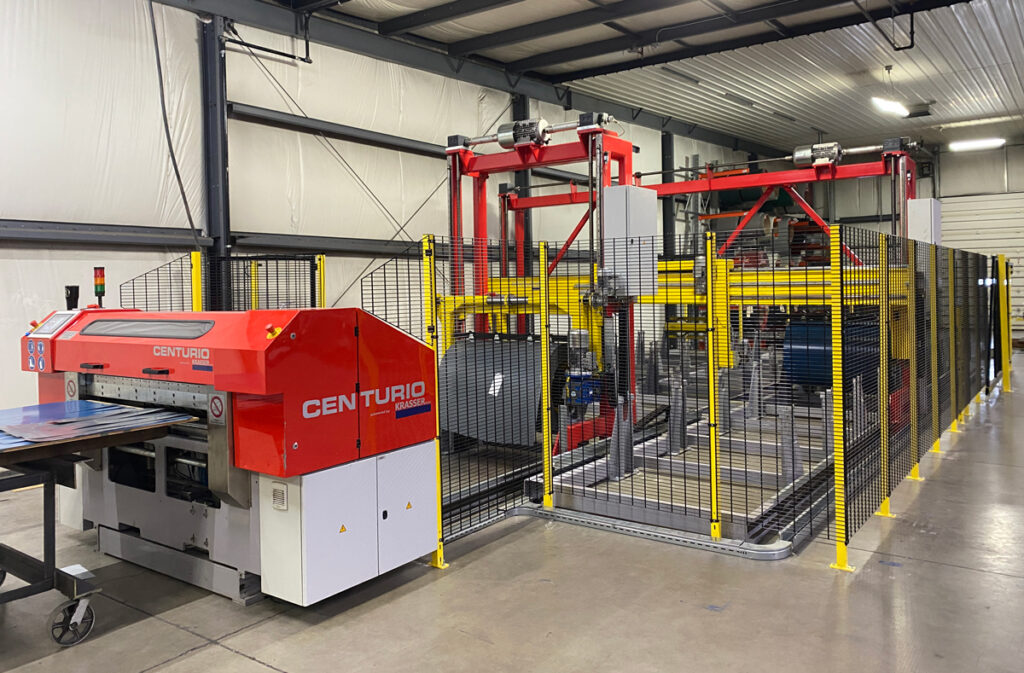
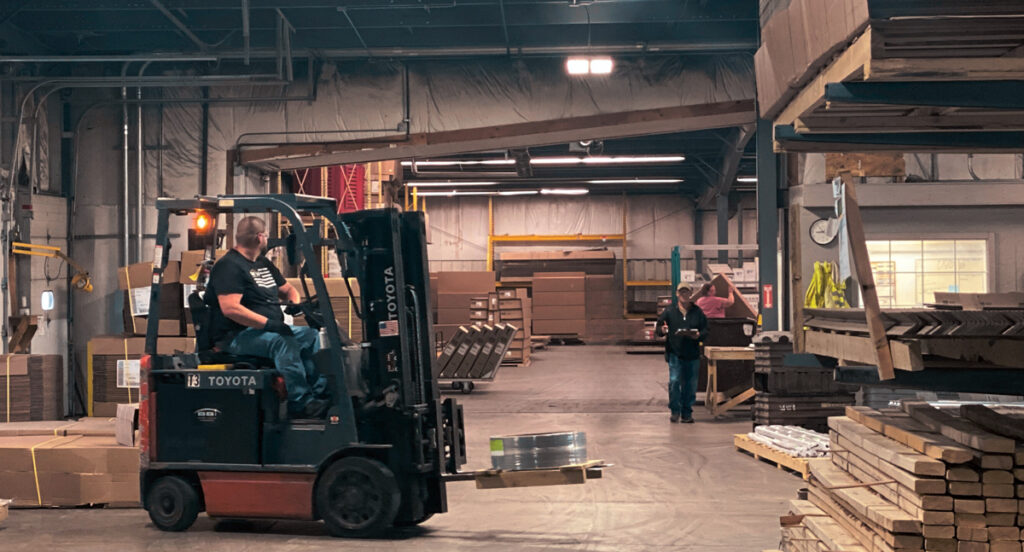
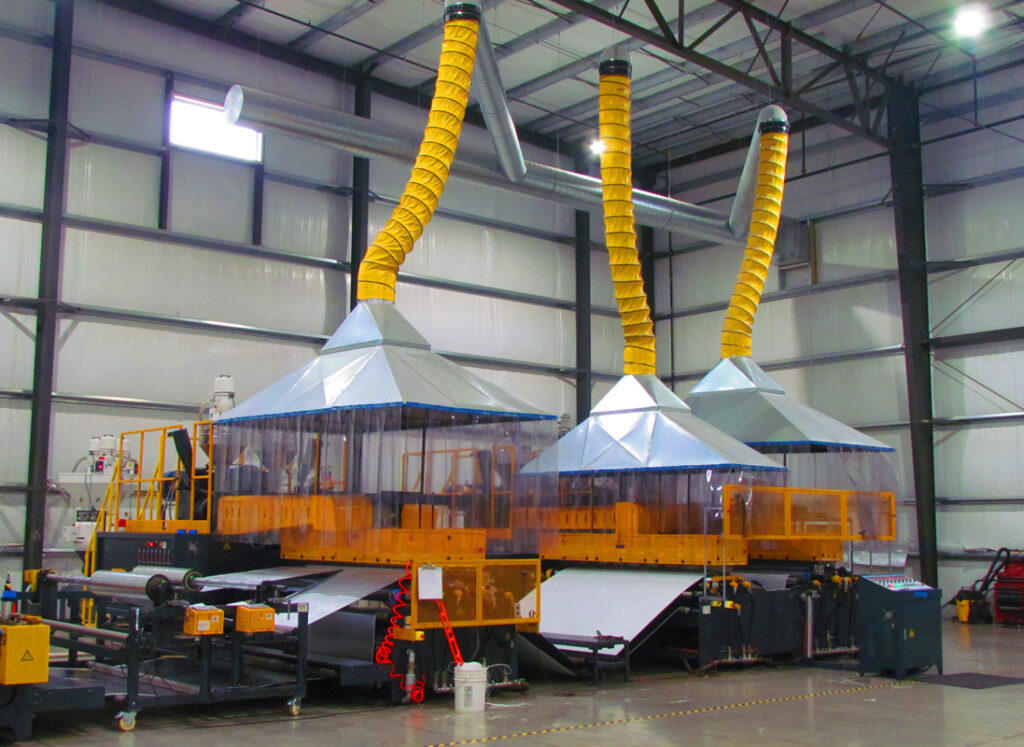
| Safety guards should remain in place unless equipment is locked out and tagged out. Photos courtesy of MWI Components | Using proper methods and ensuring pathways are decluttered and well lit will prevent incidents. | Safety measures for MWI Components’ reflective insulation machine include high-visibility caution tape on the floor, extensive machine guards, cautionary paint, and air pollution mitigation. |
Challenges
One key challenge for safety in the roll-forming industry is identifying hazards and having stop-gates put into place to minimize or reduce those hazards. Moving parts, hot materials, emissions from furnaces, and slips and trips are all potential hazards within the roll-forming industry. Identifying all locations that display these hazards and utilizing preventative measures to avoid injury before injury occurs may be an important challenge that each day brings.
Another key challenge, Johnson explained, is the aging of the U.S. workforce. Depending on what someone’s body can handle will depict how serious the result of the hazard may be. What a person’s body could handle last year may vastly differ than what it can tolerate this week. Johnson suggests that stretching, good posture, proper lifting techniques, and getting the work positioned into the right spot are ways to prevent injuries, no matter the age of the worker.
Noise and Air Pollution in Roll-forming Shops
To conquer loud operations, consider using roll forming machines with lower noise emissions. This may mean equipment with advanced design, quieter motors, or optimized machinery. Proper lubrication of any moving parts can also decrease noise levels due to reduced friction. Otherwise, loud operations should have sound enclosures to minimize the volume of noise that reaches employees. Using sound-absorbing materials or enclosures will further dampen the noise. Use materials such as acoustic foam, mineral wool, or other sound-absorbing materials to line walls, ceilings, and other surfaces around the roll former. If the noise levels are still high, hearing protection such as ear plugs or other PPE should be implemented to avoid hearing damage.
Achieving optimal levels of air quality in the shop ultimately comes down to filtration, ventilation, and collection. Without proper ventilation equipment, people who work in a metal fabricating facility could be endangering their lungs over a long period of time. An air filtration device will capture fine dust and debris particles in the air. Exhaust fans that move air in cold climates should be utilized to ensure that polluted air is exchanged for fresh air from the outside.
Promoting Employee Health
Encouraging employee health impacts individual wellbeing, boosts performance, and helps create a positive and productive work environment. Healthy employees are less likely to be absent from work and are more engaged while at work. Johnson explains that at MWI Components, they run a health initiative at least once per year for anyone that wants to join. These initiatives encourage exercise and healthy eating.
Employers can implement different approaches to encourage employees’ physical and mental health. They may offer incentives such as gym memberships, challenges, or rewards for participation. Offering healthy snacks and meals in vending machines or catering may promote eating healthy. Providing access to health screenings such as blood pressure checks, cholesterol tests, and flu shots can help employees identify and address potential health risks. It may also be beneficial to hold workshops on topics such as stress management, healthy eating, and disease prevention. Increasing employees’ awareness and knowledge promotes actively working towards a healthy lifestyle.
Conclusion
There are different factors to running a healthy metal-forming shop. These factors include ensuring safety within the building, offering first aid and emergency resources, effectively training employees, minimizing noise pollution, and promoting employee health. A healthy and safe workshop will encourage productively and help avoid serious injuries. A safe workplace is an enjoyable workplace. RF
Courtney Glover is a freelance writer and photographer based in Milwaukee, Wisconsin. She contributes her talents to various publications.


